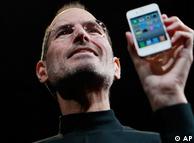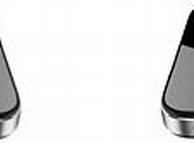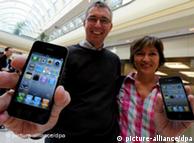Price Cuts Electrify E-Reader Market
截至週一﹐蘋果公司的iPad平板電腦在美國上 市80天內銷量達300萬台。分析師預計iPad的銷售表現有望有力提振該公司第三財季業績。 ![[0621kindle]](http://si.wsj.net/public/resources/images/OB-IY877_0621ki_F_20100621153847.jpg) Associated Press
Associated Press Amazon.com's Kindle 2
Two of the leading makers of electronic-book readers, threatened by the success of Apple Inc.'s iPad, slashed prices Monday in a move that could further drive e-readers into the mainstream.
Early Monday, Barnes & Noble Inc. cut the price of its Nook e-reader to $199 and introduced a Wi-Fi-only model for $149. Hours later, Amazon.com Inc. lowered the price of its Kindle e-reader to $189.
Both the Nook and Kindle previously sold for $259. While that was well below the iPad's starting price of $499, the e-readers lack the hit Apple product's color screen, ability to display video and websites, and thousands of specialized applications, or apps.
The moves aren't likely to end the gyrations in the nascent e-reader market. In coming weeks, both Amazon and Sony Corp. plan to unveil new versions of their devices, said people briefed on the matter. Analysts believe the new products also will emphasize lower prices.
Barnes & Noble said it dropped the Nook's price so it could reach a wider group of potential customers, especially ones who aren't hard-core readers. Amazon declined to comment beyond a press release that simply announced the price cut.
A price war for low-end e-readers could force Barnes & Noble and Amazon to rely more heavily on their profit from selling e-books. Under so-called agency sales agreements with many top publishers, e-bookstores keep about 30% of the sale price of e-books.
This content can not be displayed because your browser does not support the Adobe Flash player required to view it.
Barnes & Noble cut the price of its Nook e-reader to $199. Amazon.com responded by slashing the price of its standard Kindle e-reader to $189. Both models had been $259.
"Booksellers are actually making money off of e-books now. That was not the case when they built their business plans and set their original prices for these devices," said James McQuivey, an analyst at Forrester Research.
"Now they can go to the old razor-world model of giving away the razor for free and selling the blades. They are starting to give away the e-reader," he said.
Largely due to price cuts, Mr. McQuivey estimates 6.6 million dedicated e-readers will be sold in the U.S. this year, bringing the total sold to over 10.4 million. He expects prices on some e-readers lacking wireless Internet access will hit $99 before the end of this year.
The price-cutting comes as makers of e-readers seek to differentiate themselves from the multipurpose iPad. Most dedicated e-readers cannot show color images or video. But unlike the shiny-screen iPad, they can be read in bright sunlight, such as on the beach.
-
-
Warren's Consumer Electronics Daily
Sony Expanding Reader Distribution
-
Publishers Weekly
How About 'Both' Instead of 'Either/Or'?
That's why apart from price, e-reader makers are countering the Apple threat by focusing on reading. Speaking to investors last month, Amazon Chief Executive Jeff Bezos said that a color display for the Kindle is "still some way out," and that Amazon was focused on serving "serious reading households."
Apple has shaken Amazon's grip on the emerging digital reading business. Earlier this month, Apple CEO Steve Jobs said that in the first 65 days the iPad was on the market, customers had downloaded some five million e-books from its iBookstore—and that the company has captured 22% of the e-book market. (The figure couldn't be verified independently.) That share is expected to grow after Apple releases its iBook app for the iPhone this week.
Barnes & Noble and Amazon have hedged their bets in the e-reader business, introducing apps for the iPad, iPhone and other gadgets that enable owners of those machines to buy and read e-books sold by B&N and Amazon.
Publishers had mixed reactions to the price cuts. Some were buoyed by the news because it suggests that e-books, the fastest-growing segment of their business, could grow even faster. Others expressed concern that e-books will further cannibalize sales of hardcover books, the most profitable corner of publishing.
David Young, CEO of Lagardere SCA's Hachette Book Group, said that "anything that has the potential to harm printed book sales is worrying to publishers."
Roxanne Coady, who owns R.J. Julia Booksellers in Madison, Conn., said e-books present an opportunity for independent bookstores "to secure their position as the place where you to go see books. The question is, how do we convert that into sales?" One answer, she said, may be by further emphasizing the role of these stores as gathering places.
![[EBOOK]](http://sg.wsj.net/public/resources/images/P1-AV871B_EBOOK_NS_20100621202801.gif) Bloomberg News
Bloomberg News One leading publisher expressed concern that further growth in e-readers could lead to younger consumers buying the devices—and then looking for pirated digital books.
The new scaled-down, $149 Barnes & Noble Nook features only a Wi-Fi network connection for buying and downloading e-books, which will work on private networks, in Barnes & Noble stores and places where AT&T Corp. offers Wi-Fi service. The more-costly Nook, now $199, comes with an unlimited 3G cellular wireless Internet link for downloads.
With prices starting at $149, the potential market for the Nook could double or triple, said Tony Astarita, vice president of digital products at Barnes & Noble. "You really start opening up the device to people who are not necessarily heavy readers," he said.
Neither Barnes & Noble nor Amazon will say how many e-readers they have sold.
Mr. Astarita said his company, the largest U.S. bookstore chain, had been working on a lower-priced Nook long before Apple announced the iPad, and that it introduced the price cut now as part of a summer reading push.
Also on Monday, Toshiba Corp. unveiled a touch-screen mini-notebook PC that doubles as an electronic book reader, joining a growing number of electronics makers trying to enter the device category.
The Libretto W100, which will be released in late August in Japan, features two touch-screen displays, and when used as an electronic reader it looks like an open book.
—Jeffrey A. Trachtenberg, Yukari Iwatani Kane and Juro Osawa contributed to this article. Write to Geoffrey A. Fowler at geoffrey.fowler@wsj.com
 Bildunterschrift: 苹果公司总裁史蒂夫· 乔布斯(Steve Jobs)展示IPhone 4
Bildunterschrift: 苹果公司总裁史蒂夫· 乔布斯(Steve Jobs)展示IPhone 4 Bildunterschrift:
Bildunterschrift: 
![[0621kindle]](http://si.wsj.net/public/resources/images/OB-IY877_0621ki_F_20100621153847.jpg) Associated Press
Associated Press ![[EBOOK]](http://sg.wsj.net/public/resources/images/P1-AV871B_EBOOK_NS_20100621202801.gif) Bloomberg News
Bloomberg News 